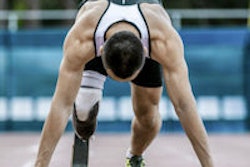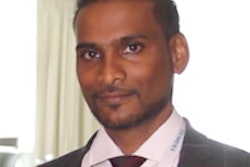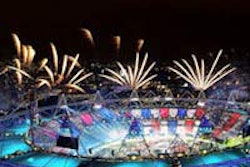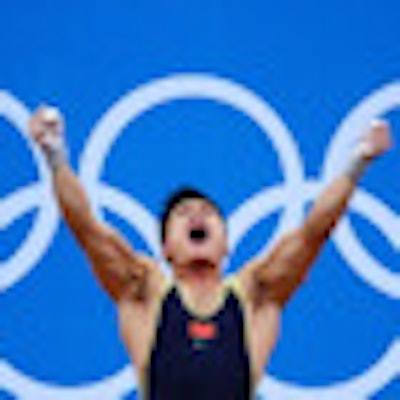
London's Olympic imaging equipment providers switch their attention to Rio de Janeiro this week, when details about their experiences and best practice are officially handed over to the Brazilians' 2016 team. Also, scanners used at the last year's games are due to be installed soon at sites across London, starting with a general practitioner (GP) referral unit in Waterloo.
The GE Healthcare (GEHC) project team for Rio is already in place, but planning for the event is still in its infancy, according to Finn Crotty, the company's London 2012 project lead.
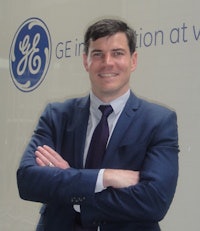 It's fitting the equipment used at London 2012 will remain in the city, according to Finn Crotty.
It's fitting the equipment used at London 2012 will remain in the city, according to Finn Crotty.
"Later this week, my team will be delivering the handover presentation to the Rio guys. This presentation will include comprehensive details on the GEHC equipment and staffing at London 2012 and imaging activity by day, modality, and anatomy." said Crotty, who has taken up a new job as GE's strategic account manager for London, responsible for key customers based in southeast England, as well as leading a number of strategic initiatives.
Reflecting on the handover process, he said he hoped there would be significantly more knowledge transfer from London to Rio compared to what he and his colleagues received from the organizers of the Beijing games in 2008. However, he pointed out the four-year gap between games and the challenge of determining which issues would be common across host cities as opposed to specific local ones, always makes knowledge transfer difficult.
"With hindsight, we didn't really know what questions to ask, and many of their challenges that we had dismissed as local issues ended up being challenges we faced too," Crotty noted, who recently reread the Vancouver Winter Olympics project handover delivered in early 2011.
At this point, exactly what equipment will be at Rio in 2016 is unclear, and the vendor is still considering the outcomes from London, but Crotty emphasizes there was no substitute for having the complete range of imaging modalities in the Olympic Village. Of particular note was the issue of trying to house the CT and MRI systems inside the polyclinic, because at the London games the scanners were in relocatable buildings outside of the polyclinic.
"The MRI scanners were the most heavily utilized and staffed imaging modality. Having all imaging centralized in one place would simplify the patient pathway and help with staffing," Crotty stressed, adding on one busy day at last year's games, the team performed 59 MRI examinations.
After the London events, the imaging equipment was sold by the London Organizing Committee of the Olympic and Paralympic Games to InHealth, a provider of diagnostic and healthcare solutions to the U.K. National Health Service (NHS). The GE Healthcare Discovery MR750w 3-tesla system used at the games will be the first of the polyclinic's equipment to be installed at the InHealth Vista Centre, a facility in Waterloo, London, where GPs can refer patients for diagnosis of certain injuries and medical conditions.
The equipment purchased by InHealth also includes an Optima MR450w wide bore 1.5-tesla MRI unit, two Venue* 40 ultrasound machines, a Logiq* E9 ultrasound system, a Dinamap Carescape V100 and three Dash 2500 monitors, and one Discovery XR656 digital radiography system.
"It is fitting that the technology we provided for the London games will remain in the city to benefit patients," Crotty commented. "I expect InHealth will find the kit as valuable as the polyclinic medical team did."
As part of the overall Olympic legacy and GE's London 2012 sponsorship, the company donated 4.5 million pounds (5.15 million euros) of healthcare technology for a new neonatal unit at Homerton University Hospital, which opened in 2010. During the games, Homerton was the closest hospital to the Olympic Park, and the decision to upgrade the equipment at the neonatal unit was aimed at tackling the local problem of high levels of mortality among newborn and premature babies, providing long-term benefit to the area.
Last year's Olympics saw 835 MRI, 405 x-ray, 392 ultrasound, and 79 CT examinations performed by the radiology service, which was created in a purpose-built 5,000-sq-ft polyclinic. Imaging figures for the Paralympics were 254 MRIs, 216 x-rays, 157 ultrasound, and 28 CT scans. In total, for both games, 27 radiologists, 56 radiographers, and 23 radiographic assistants worked at the London polyclinic.
Since London 2012's closing ceremony, Crotty has had time to reflect on his most enduring memories. He said he took pride in the fact that in some small way, GE and the whole radiology team contributed to the success of the games. He highlighted the overall atmosphere and sense of camaraderie that prevailed during summer 2012.
"Everyone got so into all the peripheral aspects of the games -- swapping badges, buying tickets for events, and trading glory stories about which athlete had either been in the polyclinic or walking around the village," he said.





